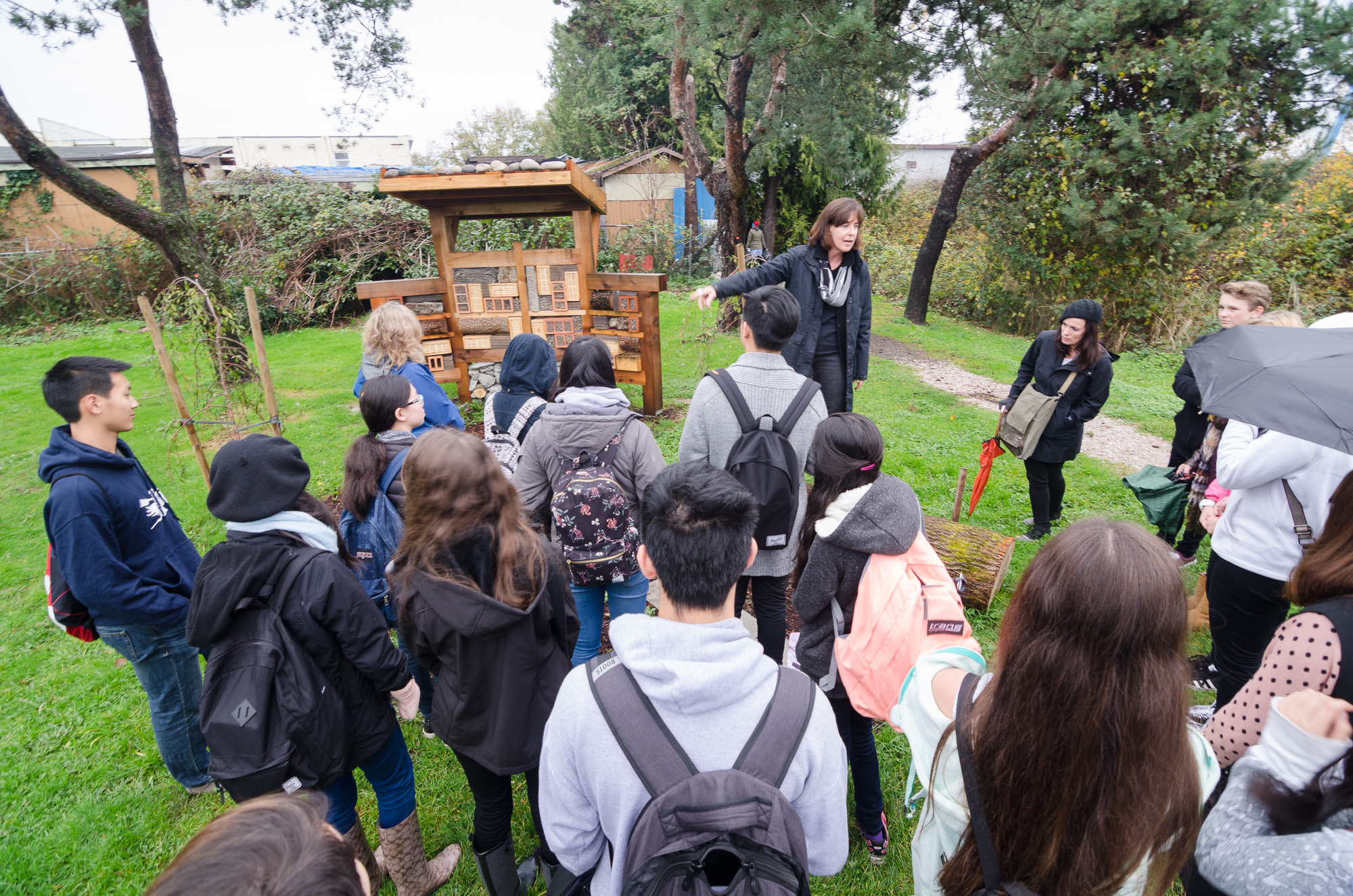Insight Citizen Science
By Dr. Cameron Cartiere, Co-founder of Border Free Bees
The Insight Citizen Science app is available for free on Apple’s App Store (Android version planned for the future). Border Free Bees (www.borderfreebees.com) and the Pollinator Partnership have teamed up to deliver this valuable new interactive app for pollinator identification, data collection, botanical referencing, and environmental observations that can be utilized across Canada, Mexico, and the United States.
Photo by Geoff Campbell/Border Free Bees

For the past twenty years, the use of crowd-sourced data collection has been on the rise and thousands of citizen science projects involving millions of participants in collecting data have been developed all around the world. But citizen science is certainly not a new phenomenon. Since the 17th century, citizen scientists have engaged in collaborations and complex networks of information sharing that contemporary researchers still use today. Perhaps one of most famous citizen scientists was naturalist and writer Henry David Thoreau.
Despite this long history, many researchers have dismissed citizen science as labour-intensive, unreliable, and producing data of questionable quality. However, this attitude has started changing recently as citizen science projects such as 'e-bird' have generated numerous peer-reviewed papers on bird population trends, while the Xerces Society’s Bumble Bee Watch helped place the rusty-patched bumble bee (Bombus affinis) on the U.S Fish and Wildlife Service list of endangered species -- the first bee ever to be acknowledged as endangered since the list began in 1973. So, citizen science data collection can certainly have impact, but the success of crowd-sourced data collection as a more easily adaptable strategy lies in thoughtful designs, clear protocols and engaging community partnerships. This is where Border Free Bees stepped into the picture.
Photo by Geoff Campbell/Border Free Bees

Border Free Bees is a multi-city, international, collaborative research project bringing together community groups, universities, municipalities, artists and scientists – all in the pursuit of supporting pollinators using public art and design as a driver for sustainable change. We work to convert neglected greenways into pollinator pastures using public art and design to create environmental change. We didn’t originally intend to produce an app on this research project: It developed out of the research. One of our primary science consultants, Dr. Elizabeth Elle (Simon Fraser University) who is one of Canada’s experts on native bees, had helped the Environmental Youth Alliance (EYA) develop a citizen science program to monitor bees in Vancouver. The project was a fantastic introduction to native bees and did a good job of engaging public participants. However, the data collected wasn’t really helpful for the type of rigorous, peer reviewed research that Dr. Elle was conducting. We sat down one day to discuss if we should apply the EYA research method to one of our pastures and Dr. Elle explained what she thought worked and didn’t work with the current approach. As she listed the pros and cons, I realized the problem was actually a design problem, not a research protocol problem. The idea for the app was born.
As a professor at Emily Carr University of Art +Design (Vancouver, BC), I am fortunate that I can work with so many talented design students. One of my research assistants, Geoff Campbell, was just entering his final year as a communication design student so I asked him if he would help on the app. Not only was he willing to help, he was so excited about the potential that he took on the app as his final graduation project. It was through his research and design talents that Insight Citizen Science was created. Geoff consulted with many experts, including Dr. Elle, to develop the app. We spent a summer testing a paper version of the app in our Bridgeport Industrial Park pasture in Richmond, BC. Dr. Elle ran a comparative study with students from her lab who used more extensive techniques to monitor bees in the pasture. The results were extremely positive. The app results were comparable to the lab student results. We continued to fine tune the app and the EYA beta-tested the app in their citizen science program the following year. Again, we had really positive results, but we still didn’t have a fully functioning app that could reach all the people who might want to participate.
Photo by Geoff Campbell/Border Free Bees

This is where we were lucky enough to join forces with the Pollinator Partnership (P2). P2 was considering creating their own citizen science app and had started to research what apps were already in development. They came across Insight on our website and contacted us. They realized that our product was effectively the app they wanted to develop, and reached out to us. Border Free Bees happily accepted the invitation and together we wrote a final grant to partner in order to get our shared app across the finish line. Now that the final product is ready to launch, we are delighted to be able to place Insight into the resources of the Pollinator Partnership.
Not all citizen science projects are intended to achieve a greater degree of public understanding of science, social change, or improved science-society relationships. Some are designed specifically for the impact they can have on data collection and/or data processing. By joining forces with P2, we are better able to tap the expanded potential of citizen science engagement and expand an application into the realm of data collection, data processing, and increased science knowledge for participants.
